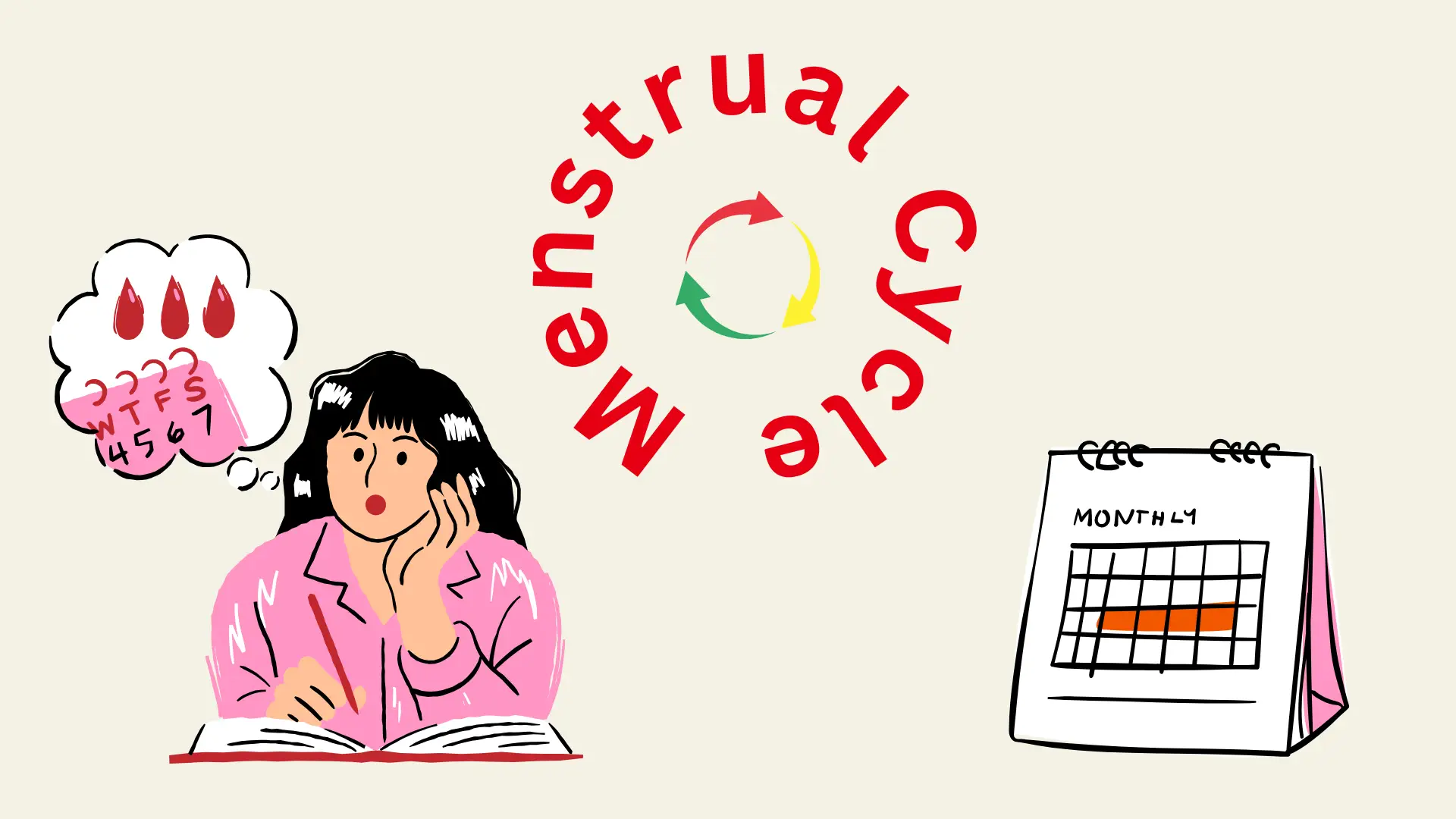Introduction
The menstrual cycle is a natural process that every woman experiences, and understanding it can help you manage symptoms and maintain health. This guide explains the phases of the menstrual cycle, common symptoms, and tips for staying healthy throughout each stage.
What is the Menstrual Cycle?
A woman’s body goes through a monthly cycle to prepare for a potential pregnancy. This cycle, lasting around 28 days, involves hormonal changes that regulate the release of an egg and the thickening of the uterine lining. If pregnancy doesn’t occur during the Ovulation Phase (14 of a 28-day cycle ), the lining sheds, resulting in menstruation.
Phases of the Menstrual Cycle
1. Menstrual Phase
- What Happens: The cycle begins with menstruation, when the uterine lining sheds, resulting in your period.
- Duration: Typically lasts 3-7 days.
- Common Symptoms: Cramps, fatigue, and mild bloating.
2. Follicular Phase
- What Happens: During this phase, the body prepares to release an egg by growing follicles in the ovaries.
- Duration: This phase begins on the first day of your period and continues until ovulation, around day 14 in a 28-day cycle.
- Common Symptoms: You may feel more energetic and notice clearer skin due to rising estrogen levels.
3. Ovulation Phase
- What Happens: An egg is released from the ovary, making this the time when you’re most fertile.
- Timing: Usually occurs around day 14 of a 28-day cycle.
- Common Symptoms: Mild cramping, a slight rise in body temperature, and increased cervical mucus.
4. Luteal Phase
- What Happens: If the egg isn’t fertilized, hormone levels start to drop, signaling the body to prepare for menstruation.
- Duration: This lasts about 14 days, leading up to your next period.
- Common Symptoms: PMS symptoms like mood swings, bloating, and breast tenderness.
Common Symptoms Throughout the Cycle
- Cramps: Caused by uterine contractions; usually felt during the menstrual phase.
- Bloating: Common during the luteal phase due to hormone fluctuations.
- Mood Swings: Often due to changing hormone levels, especially before and during your period.
- Headaches: Some women experience headaches around their period, often linked to hormone changes.
Tips for Health During the Menstrual Cycle
1. Manage Cramps Naturally
- Heat Therapy: Use a heating pad or warm bath to relax muscles and relieve cramps.
- Exercise: Gentle exercises like walking or yoga can help reduce cramps and improve mood.
2. Eat a Balanced Diet
- Iron-Rich Foods: Menstruation can lead to iron loss, so include foods like spinach, beans, and red meat.
- Stay Hydrated: Drinking plenty of water can reduce bloating and help you feel more energized.
3. Track Your Cycle
- Why Track?: Tracking helps you understand patterns, recognize symptoms, and identify fertile days.
- How to Track: Use a menstrual tracking app or calendar to note the start and end of each phase.
4. Prioritize Mental Health
- Stress Management: Practices like meditation or deep breathing can help balance emotions, especially during PMS.
- Seek Support: Talking with friends or loved ones can make a big difference if you’re feeling down.
When to See a Doctor
Most menstrual symptoms are normal, but see a healthcare provider if you experience:
- Heavy Bleeding: Periods that soak through a pad or tampon every hour for several hours.
- Severe Pain: Intense cramps that don’t improve with over-the-counter pain relief.
- Irregular Cycles: If your cycles are consistently shorter than 21 days or longer than 35 days.
Conclusion: Embracing Your Cycle for Better Health
Understanding your menstrual cycle and the symptoms that come with it can make each phase easier to manage. By following these health tips, you can support your body’s natural rhythms and feel your best throughout the month. Remember, your cycle is a normal part of life—embrace it and take good care of yourself at every stage.

